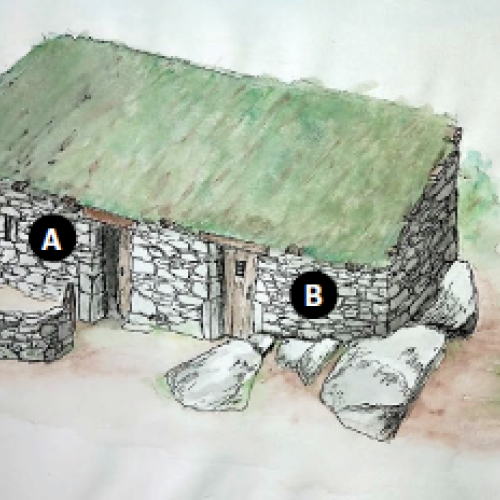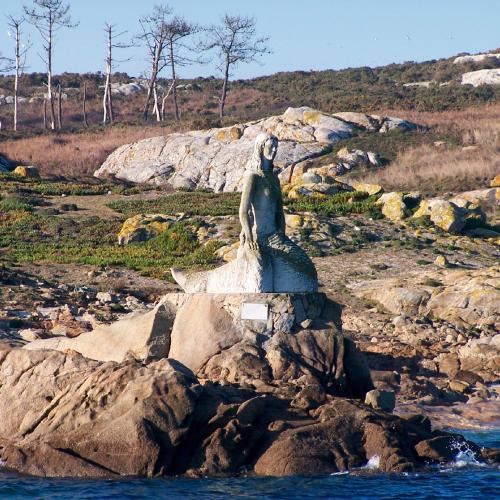Folleto informativo sobre o arquipélago de Sálvora e as rutas que se poden realizar.
THE ARCHITECTURE OF THE CÍES ISLANDS
The architecture preserved on the Cíes Islands is represented by remnants of constructions of various typologies, linked to the different activities and occupations developed throughout history on this island territory: convents, saltworks, lighthouses, etc. Often overlooked for not offering characteristics of monumentality and/or aesthetic virtuosity, the so-called "folk architecture" is also present in considerable numbers across the three islands (around 16 sites), but especially on the Middle and Northern islands.
3,000 YEARS OF HUMAN OCCUPATION ON THE CÍES ISLANDS
Long before the Roman polymath Pliny the Elder mentioned the current Cíes Islands (Insulae Sicae) for the first time in the 1st century AD, this insular space had already been occupied in a more or less continuous manner by stable population groups since the Late Bronze Age (7th–6th century BC), as evidenced by the archaeological excavations carried out at the so-called Castro das Hortas (or Castro das Cíes), located on the Middle Island or Faro Island.
Although primitive people and protagonists of ancient history such as Celts, Romans, and Swabians lived and spread throughout Galicia, there is no data or study of settlements or uses of this island from that time. Some evidence found on the beach at Salvora indicates to the passage of these navigators, but does not demonstrate their settlement on the island. Thus, the known history of Salvora begins at the end of the Early Middle Ages when, as part of the Galician-Asturian crown, King Alfonso II the Chaste donated it to the Church of Santiago.
Formulario para a solicitude de actividades para grupos organizados asistidas polo equipo de uso público do Parque Nacional Marítimo Terrestre das Illas Atlánticas de Galicia. Tanto no Centro de Visitantes (Vigo) como nas illas.






